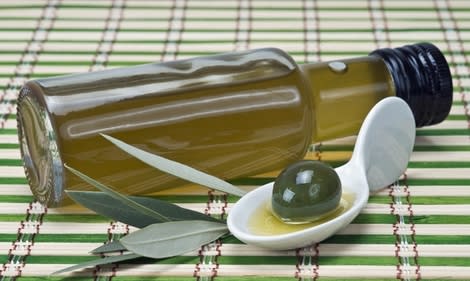What You Need to Know Before Buying Olive Oil

Most of us probably don't give much thought to buying a bottle of olive oil. It's just like picking up any other cooking oil, isn't it? It's all the same, so the best thing to do, clearly, is just buy from whoever is selling it cheapest.
Related: 7 Myths About Olive Oil
Well, not quite. Olive oil comes in different grades - like the popular extra-virgin, for example - and even within a particular grade, quality can vary widely. And there are many factors which influence the level of quality of an oil, including everything from the type of olive (or olives, in the case of blends) used to make the oil and when it was harvested, to how it was handled during processing and shipping, and even the type of bottle in which the oil is contained.
Related: Why You Should Cook with Olive Oil
These days, too, with all of the cases of food fraud surfacing, it's understandable to be concerned with the provenance of one's ingredients. It is hurtful to us as consumers not to know whether we are really getting what we pay for. Olive oil, unfortunately, has been one product that has been in the spotlight with respect to food fraud for some time. A widely cited study of supermarket extra-virgin olive oils led by Dan Flynn, executive director of the UC Davis Olive Center, found that 69 percent of the oils tested were flawed and did not meet the criteria for the extra-virgin grade. And the practice of "watering down" olive oils with cheaper vegetable oils is also a major problem. Disturbing, to be sure, but certainly there must be a way to fight back.
Related: Is Your Olive Oil Rancid?
What Does Good Olive Oil Taste Like?
A good extra-virgin olive oil will exhibit fruitiness; in fact, it is the minimum criterion for the International Olive Council to consider an olive oil for the extra-virgin grade. What, exactly, is fruitiness? Simon Field, instructor for Savantes, an olive oil certification program for producers, says a fruity olive oil is "reminiscent of both the odor and taste of sound, fresh fruit" which can be "picked at its optimum stage of ripeness" but can also be reminiscent of unripe fruit, like green tomatoes, to name one example, or even a vegetable. It should, in other words, smell and taste like fresh produce.
It can also exhibit pepperiness and bitterness, two other desirable characteristics that may seem surprising to someone tasting a good oil for the first time. These are not flaws; rather, they are evidence that an oil is fresh and that it contains beneficial compounds like polyphenols.
Pick the Right Bottle
Particularly when purchasing extra-virgin olive oils, avoid those that are contained in clear glass bottles. Instead, choose oils sold in dark glass bottles, which minimize the oil's exposure to light and help keep it fresh longer. When exposed to light, certain beneficial components of extra-virgin olive oil, polyphenols, break down. Polyphenols have been shown to have antioxidant and anti-inflammatory properties and help protect the oil from spoiling.
Related: What to Do with Old Olive Oil
Check the Date
Most extra-virgin olive oils will have a "best by" date and in some cases, the year the olives used to make the oil were harvested. If you see this information on the back of the bottle, pick an oil made using olives from the prior or current year. Olive oil is different from other oils in that it is extracted from the juice of a fruit, and like fruit juice, it is best consumed as soon as possible after it is harvested. If there isn't any information on the harvest, and only a date, choose an oil whose "best by" date is no later than two years from today.
Packed in… Bottled in…
Be leery of labels like "Packed in Italy" or "Bottled in Spain" - such claims are misleading. It may sound like the oil in the bottle is made from olives grown in that particular country and made in that country, but that's often not the case. Instead, look for labels that talk about production from a specific mill. Labels that specify a Protected Designation of Origin (PDO) or a Protected Geographical Indication (IGP in Italian) are also usually good signs.
Don't Buy Too Much at Once
In a way, purchasing extra-virgin olive oil is like purchasing spices: You don't want to buy too much at once. Because of its perishable nature, the faster you use it up, the better.
Related: Butter vs. Olive Oil: What's Better?
Last Words
If you happen to gain an appreciation for fine olive oils, some things you may want to consider delving into are:
-Trying "early harvest" versus "late harvest" oils: Early harvest oils come from green olives that often exhibit marked pepperiness and/or bitterness. They are also called "robust" or "full-bodied." Late harvest oils come from riper olives which tend to turn creamier, nuttier, and in general, mellow out. They are often described as "mild" or having "delicate fruit."
-Trying olive oils made from different varietals: Like wine, olive oil can be made from different varietals of the fruit. Some popular ones include Arbequina, Frantoio, Picual, Hojiblanca, and Koroneiki.
-Trying olive oils made with the same varietal in different parts of the world: Many varietals can be grown in different places around the world. Depending on where they are grown, the same varietal can take on different flavor characteristics.
Click here to see other things you should know before buying olive oil
-Will Budiaman, The Daily Meal
